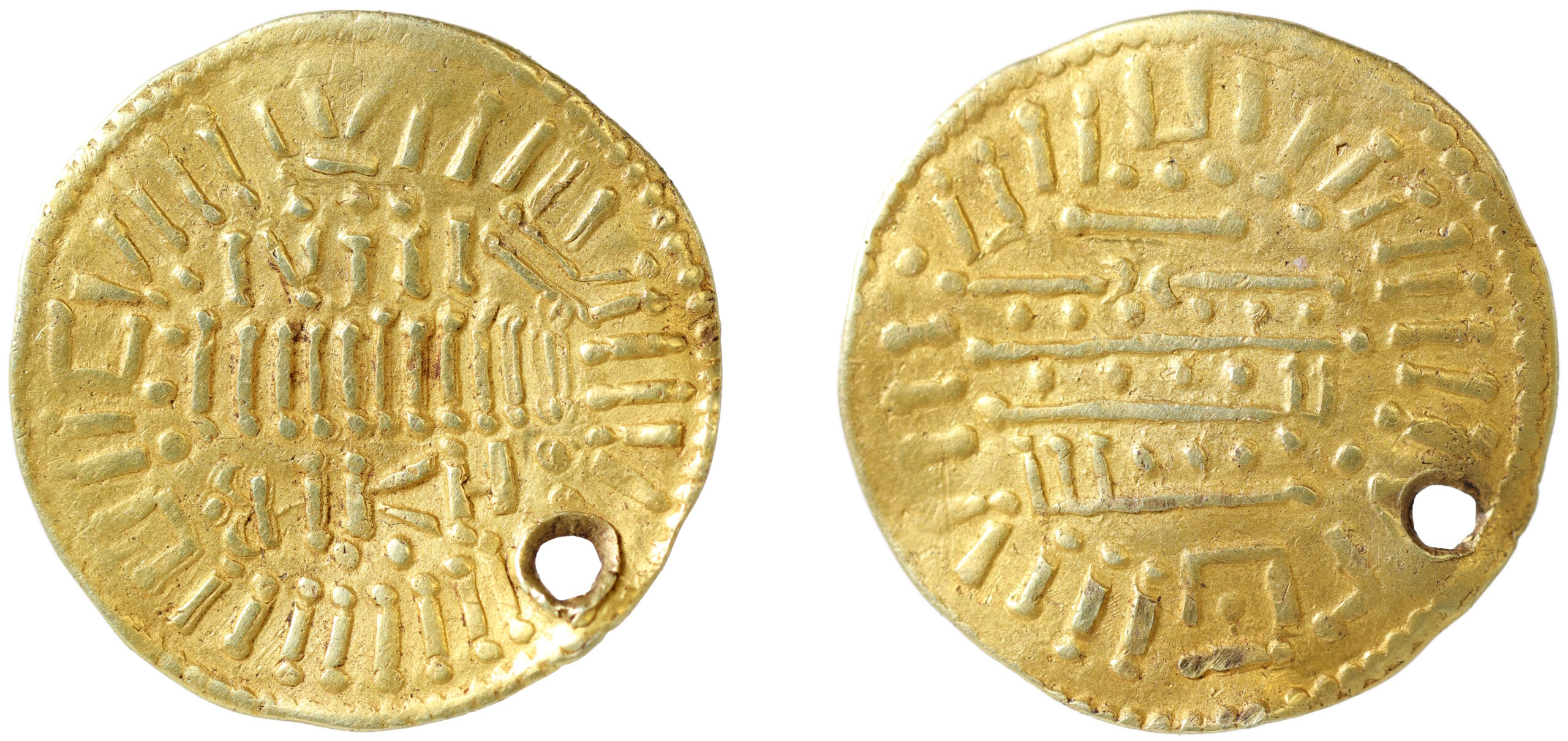A gold disc struck with a fake inscription in imitation of an Islamic dinar found in Norfolk was probably made by a Viking. The pseudo-coin pendant was discovered in April 2021 near Morston, Norfolk, by a metal detectorist and has now been declared treasure.
Each side of the fake coin is decorated with a beaded border that surrounds an “inscription” that consists of vertical strokes on the obverse and horizontal strokes on the reverse. The lines end in raised dots and the horizontal lines alternate with rows of dots. This is so abstract an imitation of Arabic script that it was likely a copy of a copy of a dinar, far enough removed from the original inscription that the maker never laid eyes on it.
Islamic numismatics experts have dated the coin that inspired the copy to the Abbasid dynasty (770-820 A.D.). That doesn’t automatically mean the copy dates to the same period, especially since there were probably several generations of copies between the original and this imitation. The estimated date range is from the late 8th century to the mid 10th century, with the most likely window between 780 and 850 AD.
The pseudo-coin was pierced so it could be worn as a pendant, a common practice in the Scandinavian Viking Age (c. 800–1140 A.D.). Hundreds of coins reused as ornaments have been found in Viking-era graves and hoards, most of them silver and bronze. It was an easy way for people to make their own jewelry, since it required no specialized expertise or equipment to pierce a coin (a nail and a hammer would make short shrift of the job) or mount a loop to it. Converted gold coins are more rare and functioned as status symbols for their owners.
The practice also extended to coin-like discs struck in imitation of the real thing. As far as the makers were concerned, the coin didn’t have to be a genuine dinar or denarius or any official authorized currency to hold the same value and importance. They weren’t intended to be circulated forgeries, but as pieces of expensive jewelry with the coin aspect acting as a recognizable brand. Often the imitations were high quality, as in the example of the gold-plated faux dinar fibula recently discovered in the Hedeby hoard which copies an Almohad dynasty (1147-1269) gold dinar.
Prof Naismith, from Cambridge University, said some gold dinars from the Anglo-Saxon period have been found in England, probably arriving via Italy. […]
Contact between the Viking and Muslim worlds has been long-established by historical accounts and many dinars have been found in Scandinavian graves.
“So to my mind there is a very plausible connection” that the coin was a Viking imitation, said Prof Naismith.
However, with no evidence that Arabic traders came to England at this time, he believes the coin was struck in Scandinavia before being lost in Norfolk.
The county was part of the wider area of England ruled under Scandinavian law and customs, known as the Danelaw, which was established following Anglo-Saxon king Alfred the Great’s AD878 defeat of the Viking Great Army.
The Vikings had made Thetford in Norfolk one of its winter camps.

There is a –genuine– “HALVDAN WAS HERE” runic scribble from the 9th century in the northern first floor gallery in the ‘Hagia Sophia’ in Istanbul/ Constantinople.
I would love to have one of those coins to wear!